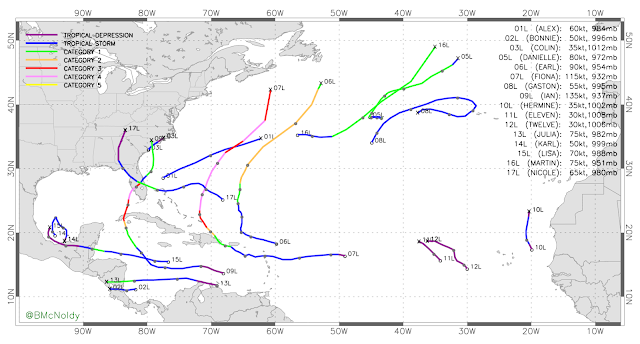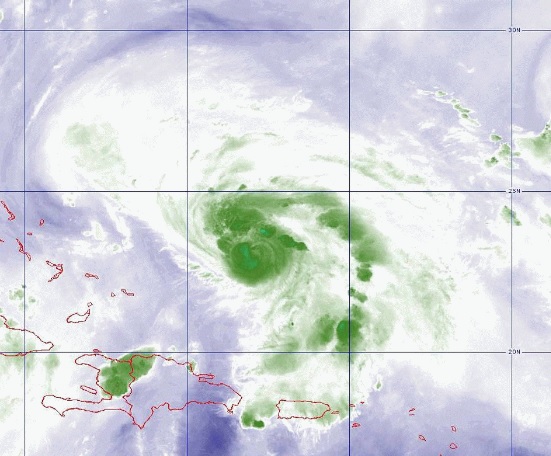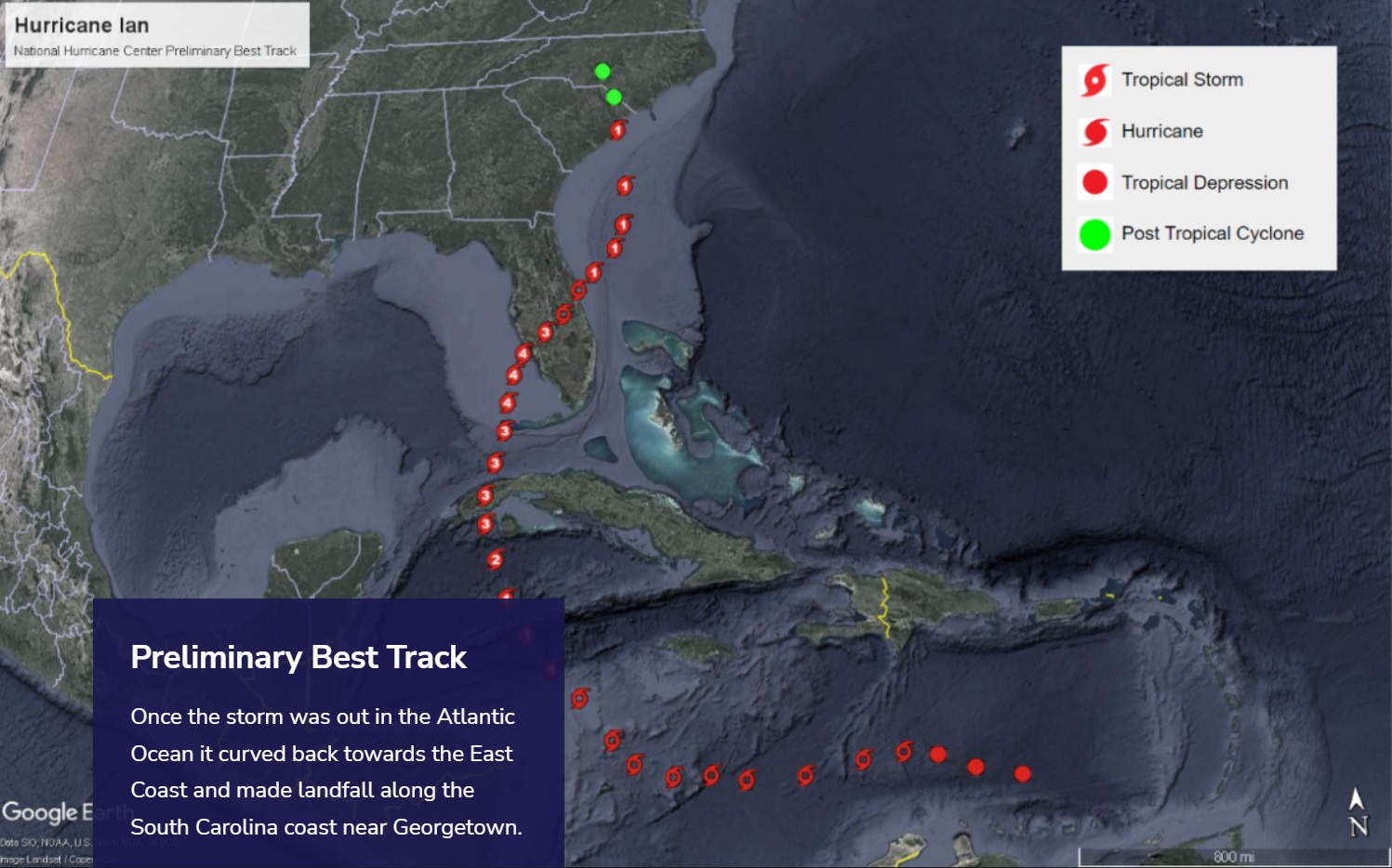Tropical weather
-

Aarohi Sheth of Currently newsletter reported that “The world’s insurance bill from extreme weather events and climate disasters this year is $115 billion — 42 percent higher than the 10-year average of $81 billion, according to Swiss Re, a Zurich-based reinsurance giant.“ The story also noted that the firm estimates that Hurricane Ian, the Category 4…
-

November 30 marks the end of the Atlantic Tropical Season, one of our biggest weather-makers in the summer months. This year was a strange one, with a long period of no activity at all from the beginning of July through a good part of August. In spite of that, however, we saw a lot of…
-

In this blog I often write about the damage caused by tropical storm such as Irma, Michael, and Ian. But I don’t often see stories about how the affected farmers are recovering from their losses. Here is a Southeast Farm Press story about the Bahamas that makes me feel very good about the role that…
-

Measuring the impacts of a single extreme weather event can be difficult. Extension agents in Florida have an even tougher job since they are assessing delayed impacts from a frost last spring plus both Hurricanes Ian and Nicole, some of which ran over the same area. If an area was already impacted by one event…
-

The North Carolina State Climate Office just released a summary of the impacts of Tropical Storm Nicole on North Carolina. It can be viewed at https://climate.ncsu.edu/blog/2022/11/rapid-reaction-late-season-nicole-offers-needed-rainfall/.
-

Tonight Nicole became a hurricane as it crossed the warm water of the Gulf Stream. It is expected to stay as a hurricane as it makes landfall late tonight or early tomorrow and heads northwest over Florida. If you read this in the morning digest, it will probably already be well onshore. Then it will…
Posted in: Tropical weather -

During the day today, Nicole completed the transition to a Tropical Storm and as of 10 pm ET, is near hurricane force. It is not expected to strengthen much beyond that due to wind shear, even though it will be passing over the warm Gulf Stream soon. The general forecast path of the storm is…
Posted in: Tropical weather